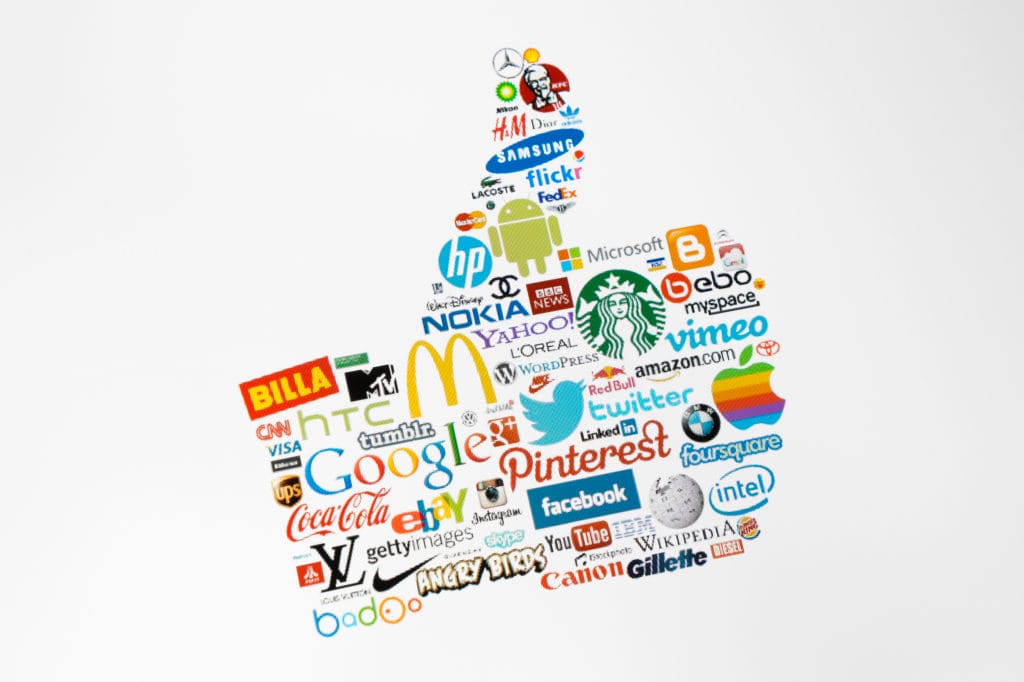Last updated on November 20th, 2025 at 01:12 am
Last updated on November 5th, 2025 at 12:24 am

(Note: This is Part I of a two-part series. Part II.)
I’ve recently had a few questions from clients about “branding” and how it relates to their marketing. So, I figured, why not do a blog post about it! For that matter, if you’re marketing then at the end of the day, you should at least have a general working knowledge of the subject.
Typically when someone says they are a “branding professional” my brain shuts off (almost instinctually). It’s sort of natural defense mechanism against blowhards who go on endlessly with things like, “Nowadays, it’s ALL about your brand,” “All other forms of marketing are DEAD,” and “JUST LOOK AT APPLE!”
So I’m going to rein it in a little bit, and not imply that building your brand is your ticket to becoming the next Mark Zuckerberg.
But branding does have definite usefulness and should be given attention when you’re marketing a dental practice.
 What is “Branding”?
What is “Branding”?
A brand is “a product or line of products that belongs to a company.”
The definition of brand has grown over time to mean something along the lines of “the idea or concept you own inside a customer’s mind; or the experience that someone associates with a product, service or company.”
For instance, the Ritz-Carlton Hotel has a strong brand; so much so that anything fancy and glamorous can be described with the word “ritzy.” Same with Mercedes. We hear those words and our minds think what they want us to think whether we like it or not. We think, “fancy,” “fashionable,” or “superior.”
Branding is the art of crafting the image you want to be associated with your product/company and getting it into the minds of the public.
Want some examples of good branding jobs?
Which sporting goods company wants you to “Just Do It”? Nike’s done a great job, because I don’t remember any other sporting goods slogans so quickly off the top of my head. If I’m serious about getting in shape, I’ll get some Nike gear.
Answer me this: where’s the happiest place on earth? Disneyland.
“Kodak moment” still means something to you, right? Even though it’s been 40 years since the original ad campaign.
How does this relate to a dental practice?
Here’s the thing about dental practice marketing: a lot of the time, your main objective is just to be there when someone needs a dentist.
It’s not like a cool new smartphone, fast car, or tasty snack, where you can appeal to someone’s desires any time of the day. Unfortunately, most patients only decide to go to a new dentist when they’re:
- Dissatisfied with their old/current one.
- Have ignored their dental needs for some time,
- Are in pain or have some kind of dental issue occurring,
- Want to improve the cosmetic aspect of their teeth, or
- Just moved into the area and need a new dentist.
You want to be the first place that “gets through” to a person when issues 1-5 above are happening. Maybe they think of you first because your postcard is sitting on their counter, or you were the top site listed on Google, or their co-worker referred them to you. And of course, if your marketing message and buttons are correct, your promotion/marketing will communicate to that person where others may not have (i.e. someone might be in #2 above—happily ignoring their dental needs—and your promotion hits home and makes them ACT!)
Or maybe…they think of you first because their mind has been trained to associate the word “dentist” with your office; because your marketing stood out and created a memorable image in their mind. Because you have a “brand.”
So we know why branding is important, now…
How do you create a brand for your dental practice?
Well, first things first, I have a few rules for you:
- The “image” or “message” you create needs to be true. A brand is an experience just as much as it is a name or logo. Think about Starbucks. Starbucks wouldn’t really be Starbucks if there weren’t wannabe writers sitting in the comfy chairs writing their screenplays, or if the barista didn’t offer a bunch of fancy options with cool abbreviations and vaguely Italian sounding names. Honda wouldn’t be Honda if their engines didn’t actually last a gazillion miles.
So you have to back it up. Don’t claim you’re “The most advanced, most high-tech, modern office in town” with a messy office and equipment from 1973. That “brand” will fall flat real quick.
- The brand needs to be consistent and woven into everything you do. When you’re creating a brand, you’re taking a “stance” of some kind. You’re trying to get a message across to the public. Of course the name, slogan, and logo need to reflect the brand you choose. But it also needs to go beyond that.

There’s actually two aspects to this:
Graphic design: The brand should be represented in the general design of your postcards, website, emails, signage, ads, or any other physical item that comes from your office.
Content: The brand should be represented in the actual words you and your staff members say, and the way you say it. If you’re supposed to be warm and happy, you and your staff had better greet patients with a genuine smile (not a fake smile, by the way, because people can sense insincerity—you need staff that genuinely care for the patients) and call them by name. If you’re supposed to be professional and technically precise, then the whole staff had better have crisp outfits and not be browsing magazines or chewing gum when the patient arrives.
Also, use any written communication from your office to back up this stance that you’re taking. The text on the website should reinforce your brand. Same goes for letters to patients, postcards or flyers, TV or radio ads, or even public events you do, like lectures, seminars, news stories or press releases.
Continue with Part II…
To continue reading, please Part II.





No Comments
Be the first to start a conversation